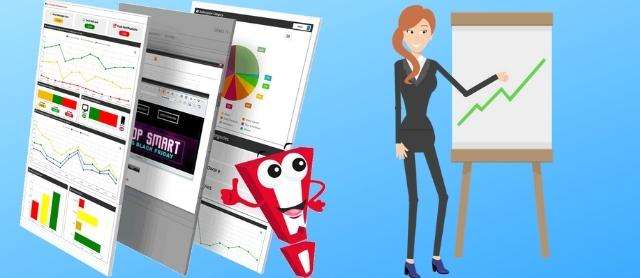Sales motivation and engagement are year-round processes. As you put your sales plans to work, you must consider incentives that will motivate your sales staff, drive performance, and keep morale high.
A sales commission structure is the main motivation tool for most salespeople. But several other incentives can help encourage your sales team. One of the most popular is a Special Performance Incentive Fund (SPIFF).
SPIFF Programs Motivate Sales Staff
Incentives are an excellent way to push for results and encourage the sales team to perform better, especially when sales are low.
Numbers can prove this:
- 9 out of 10 top-performing organizations use incentive programs to reward their sales associates.
- Designing a structured incentive program can increase employee performance by over 40%.
- After applying the right rewards, businesses with an incentive program achieve a 79% success rate in terms of established goals.
A SPIFF program is a short-term incentive that helps drive sales of a service or product. You may consider these programs in your compensation plan, but they are not always mapped out. Instead, you can offer spontaneous incentives to boost performance over a short period
Types of SPIFF Programs
An important part of setting up a SPIFF program is determining what the incentive should be. These fall into two broad categories.
1. Cash Rewards
A monetary incentive outside your main compensation plan should be compelling enough to motivate your sales team to focus on a specific goal. Cash is often suitable for a quick SPIFF that doesn’t require reward sourcing, but debit or gift cards are better for two reasons:
- Debit cards can be printed with your brand, which strengthens the emotional and mental association between the reward and your brand.
- Card rewards leave an easier-to-follow audit trail.
Gift and debit cards have the same or similar versatility as cash, with bonus advantages that make them more effective and efficient. With prepaid rewards, you don’t commingle the reward with everyday expenses, diluting the joy and effect of the reward. Bonus: when you provide branded car rewards, you get brand recognition whenever the prepaid card is used. This recognition reinforces the behavior that you tried to incentivize in the first place.
2. Non-Cash Rewards
These rewards provide for more creativity in your incentive program. Many businesses find non-cash rewards more effective than traditional cash incentives.
Non-cash incentives include:
- Merchandise rewards subscription boxes and subscriptions to streaming services
- Wine club membership
- Advanced learning opportunities
- Travel opportunities that can either be just for fun or combine company events with a pleasurable vacation
- Big ticket items such as Super Bowl tickets or tickets to the Masters for grand prizes
- High demand items such as green eggs and Peloton’s on the lower end
How to Motivate Staff to Increase Sales with an Effective SPIFF Program
The trick is knowing how to apply SPIFFs correctly to motivate staff and identifying sales incentives that drive sales. Unfortunately, missteps can cause a poorly designed program that’s not effective.
Here are things you should remember to use SPIFF programs successfully.
Identify Well-Defined Goals
Make sure your sales staff understands what the SPIFF is trying to achieve. For instance, the aim or goal might be to increase sales of specific products or close more deals within a specified time.
Revenue growth is the alpha and omega of your business’ success. Achieving this growth requires setting realistic but challenging sales goals. Too many goals will overwhelm the team, while too few will leave them unmotivated.
Use SPIFFs Spontaneously
The success of your SPIFF program depends on timing. Such incentives boost short-term sales, balance the incentive value and time required to hit the goals using historical information from performance tracking tools.
A SPIFF that occurs at the same time each month or year will become routine and not as effective at motivating your sales staff. Employees may take advantage when they expect SPIFF at the end of each year. You should keep your programs to as low as eight or a maximum of 12 annually.
Have a Timeframe
SPIFF programs are short-term, so you need to set an amount of time for sales staff to achieve the goal. The timeframe acts as a deadline that pushes sales representatives to act. If they think they have plenty of time to complete tasks, they may not achieve their sales quotas.
However, keep time constraints realistic. You have the option of announcing a clear winner once the deadline lapses or you can keep it a secret to maintain the energy going.
Understand What Motivates Each Sales Team Member
Almost all employees are motivated by unique factors. So, instead of assuming what might motivate your sales staff, ask them. Use the data to determine what SPIFFs are likely to work for them.
You can also use incentive program management software to simulate how different SPIFFs will perform as part of your sales compensation plan. The software can also help you structure how you reward staff members with unique skills.
Keep Your SPIFF Simple
Simplicity is critical when choosing your sales incentives. Complex incentives can lead to confusion and make it difficult for your sales team to prioritize their actions.
The best SPIFFs are aligned with the sales team members’ actions while providing a path that they can follow. It’s important for your team to see that they get reward X for doing or selling Y.
Promote Your Program
Make sure everyone in the sales team is aware of incentive programs to increase awareness and encourage participation. One option includes building a promotion and communications plan. You can follow this up by working with supervisors to run ongoing campaigns that encourage participation.
Program promotion campaigns may include marketing tactics such as games that tie into the incentives, fun messages using the company intranet or email, and posters. Provide information about incentive programs in your employee onboarding checklist so every new hire is aware from day one.
Have a Budget
Businesses need profits to survive. You may use a SPIFF program to increase sales to meet financial obligations, but if the reward makes it hard to meet these obligations, the program fails.
Make sure you hold up your side of the bargain when your sales staff reach their goals. Overestimate the total amount of rewards you expect to hand out if the campaign brings in multiple winners.
Analyze Outcome and Adjust
You must analyze the performance and effectiveness of any compensation you put before your sales staff. The same applies to SPIFF programs. Compare results to your predicted outcome to decide if it is working.
Give yourself enough time to spot performance trends, which may vary according to sales cycles. Data from the analysis will help you figure out whether or not your program is working. You can then tweak it and do it again.
Make Your Incentives Meaningful
Learning how to motivate sales teams using SPIFF programs allows you and your business to shift how you think about motivation. A SPIFF program means taking a hard look at how you coach your team and plan for the future. It is also a critical tool in reinventing strategies that motivate and engage your sales representatives in the ever-changing business world.



